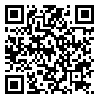BibTeX | RIS | EndNote | Medlars | ProCite | Reference Manager | RefWorks
Send citation to:
URL: http://jdisabilstud.org/article-1-3152-en.html
2- Associate Professor, Educational Psychology Department of Education, Research Institute of Education Studies, Tehran, Iran
3- Assistant Professor, Cognitive Sciences, Faculty of Psychology and Educational Sciences, Semnan University, Semnan, Iran
4- Assistant Professor, Department of Psychology, Shahrood Branch, Islamic Azad University, Shahrood, Iran
Abstract
Background & Objectives: Attention–deficit/hyperactivity disorder (ADHD) is a neurodevelopmental disorder characterized by excessive inattention, carelessness, hyperactivity, and impulsivity. These otherwise inappropriate behaviors for one’s age are pervasive and destructive. This disorder has various causes with complicated etiology. Given the mutual effects of cognitive skills on different aspects of intelligence, some aspects can be affected by the emotional components of thought, denoting a relationship with ADHD symptoms. Investigating the positive aspects of adolescents with ADHD, such as dynamism and intelligence, and emphasizing these positive aspects can help reduce many psychological, social, and academic problems of adolescents. The current research was conducted to compile a model of attention deficit among teenage students studying in the first level of secondary school based on dynamics and mental impatience with the mediation of experimental intelligence.
Methods: The method of the current research was correlational based on path analysis. The statistical population included all adolescents with ADHD studying at the first high school level in Tehran City, Iran, in the 2021–2022 academic year. In this research, using the cluster sampling method, some high schools were initially selected from 22 districts of Tehran. Then, some high schools were selected from the western region. Next, the Adult ADHD Self–Report Scale (ASRS) (World Health Organization, 2005) was given to the students for screening and identifying the students with ADHD. Afterward, 200 students with ADHD willing to cooperate with the researcher were selected as a sample. The inclusion criteria were as follows: informed consent to participate in the research, studying in the first level of high school, and having ADHD based on the Adult ADHD Self–Report Scale (ASRS). The data collection tools were the Adult ADHD Self–Report Scale (ASRS) (World Health Organization, 2005), the Excitement of Thought Questionnaire (Kazemi–Haqiqi, 2009), and the Test of Cubes (Kohs, 1920). This research was analyzed using the Pearson correlation coefficient and path analysis to investigate the relationships between variables with AMOS 24 and SPSS 26 software.
Results: The direct effect of mental impatience on attention deficit was positive and significant (p=0.006, β=0.15), but on experimental intelligence, it was negative and significant (p<0.001, β=–0.37). The direct effect of dynamism on experimental intelligence was positive and significant (p<0.001, β=0.24), and the direct effect of experimental intelligence on attention deficit was negative and significant (p=0.001, β=–0.49). The indirect effect of dynamism on attention deficit through experimental intelligence was negative and significant (p=0.004, β=–0.11), and the indirect effect of mental impatience on attention deficit through experimental intelligence was positive and significant (p=0.001, β=0.18). The goodness of fit indices showed a good fit of the proposed model (χ2/df=0.073, RMSEA=0.001, IFI=0.999, NFI=0.998, CFI=0.999, GFI=0.998).
Conclusion: According to the findings, dynamism and mental impatience through experimental intelligence predict attention deficit in adolescents. Therefore, the current research results can increase the awareness of teachers, administrators, parents, students, and education officials about ADHD and the importance of experimental intelligence in increasing or decreasing the symptoms of this disorder.
| Rights and permissions | |
 |
This work is licensed under a Creative Commons Attribution-NonCommercial 4.0 International License. |




